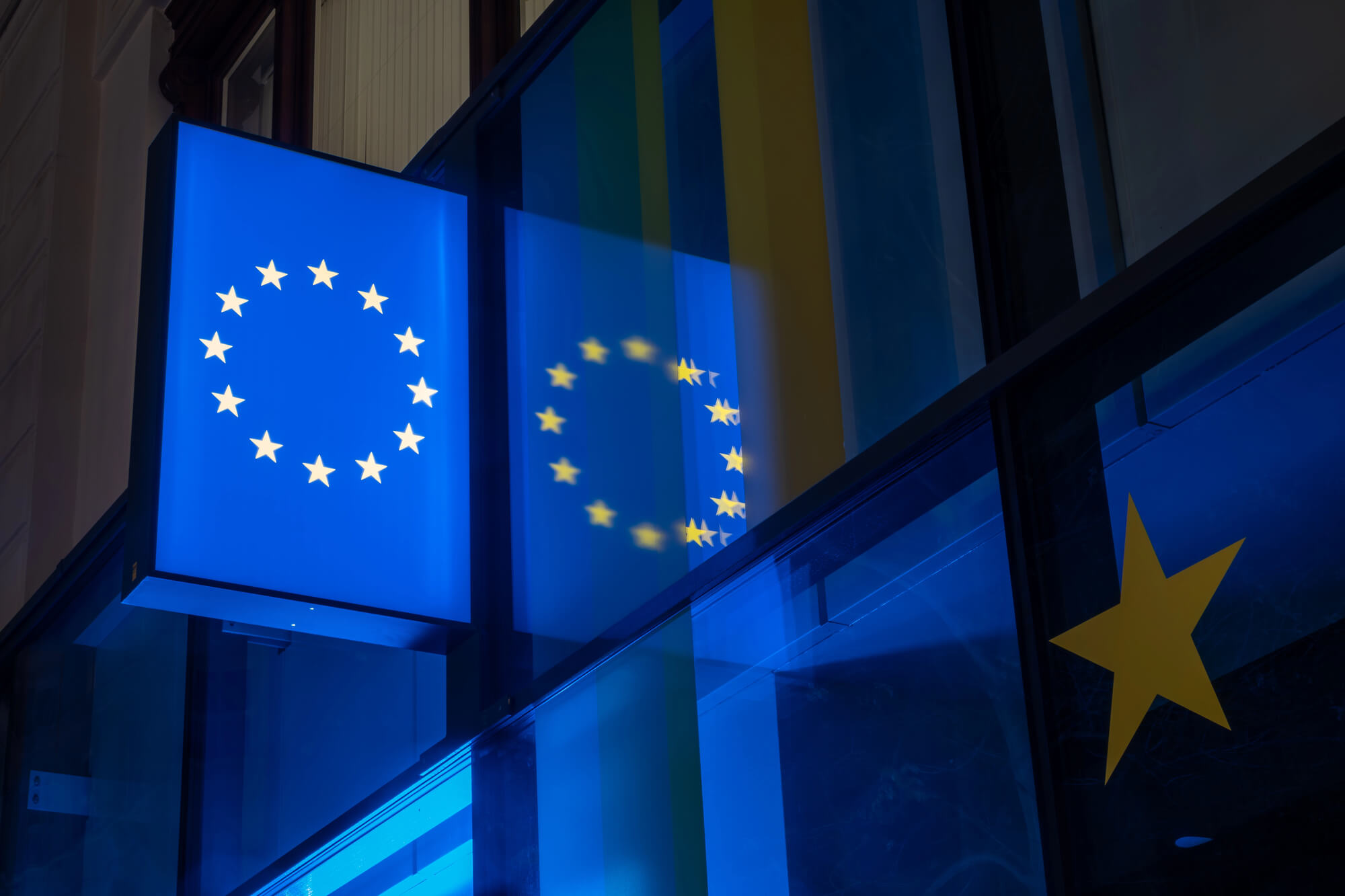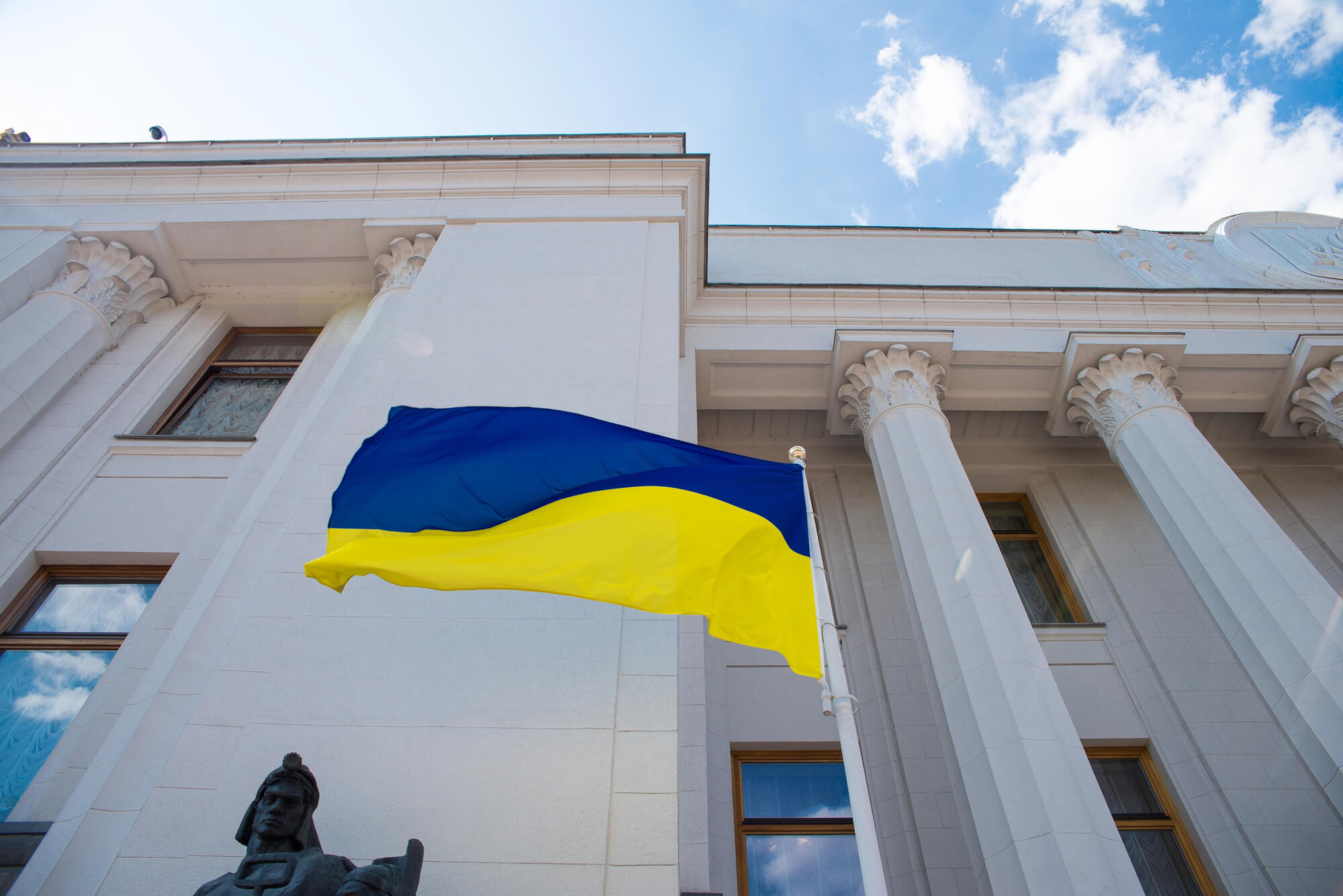On June 19-20, the National Bank of Ukraine organized a traditional conference discussing both economic research and policy issues. In this article, we summarize three policy discussions related to the EU common market, Ukraine’s integration to the EU, and the future of the European financial sector.
Representatives of the European Commission, central banks of Europe, Ukrainian government agencies, international organizations discussed challenges that make the EU less competitive and more vulnerable. As Cristine Lagarde noted in her keynote speech at the conference, Ukraine can help resolve some of these problems.
EU Enlargement Implications for Financial Sector: Peer Learning for a Better Future
Chair: Stefan Ingves, Toronto Centre, former governor of the Central Bank of Sweden
Panelists: Andriy Pyshnyy, governor of the National Bank of Ukraine, Vitas Vasiliauskas, Executive Director at the International Monetary Fund, former governor of the central Bank of Lithuania, Jacek Jastrzębski, head of Komisja Nadzoru Finansowego, Poland, Sergii Marchenko, Minister of Finance of Ukraine
The panelists agreed that the EU integration is a two-way street: Ukraine needs to do its homework, i.e. to comply with acquis communautaire and to communicate these reforms to citizens. On the other hand, the EU will also need to change in response to the new challenges. In particular, integration of the EU financial markets need to be strengthened, and some regulations that undermine competitiveness will need to be revised.
Andriy Pyshnyy underlined that Ukraine invested into the EU integration a lot of effort and is paying for it a very high price. Ukraine’s integration into the EU will be beneficial for both sides because it can bring new energy to the EU and help the Union to achieve its goal of strategic autonomy. As the Mario Draghi report says, in order to improve its competitiveness, the EU needs to revise its regulation.
Vitas Vasiliauskas recalled that Lithuania used the EU accession process to push forward some very much needed structural reforms. Joining the EU was the best thing for Lithuania from economic, political, legal, business, ethics, and corporate culture perspectives. Now Lithuania is going through the “second Golden Age” (the first was in the 16th century): between 2004 and 2024, its GDP per capita increased more than four-fold, and average wage almost six-fold. In 2015, Lithuania joined the Eurozone, after 13 years of consistent efforts. During this time, popular support for the introduction of the euro increased from 37% to 60%.
However, the EU journey is a marathon that continues even after the accession. Thus, today, the EU is discussing tighter integration in many areas, including the financial sector, and the implementation of the famous EU four freedoms (movement of goods, services, people, and capital) is far from complete.
Sergii Marchenko informed the audience that the Ukrainian government has a plan for financial integration of Ukraine and the EU. Today, within the framework of this plan, the parliament is considering the draft law on joining the Single Euro Payment Area (SEPA). The law will largely simplify settlements in euro: people and businesses will be able to make payments from Ukraine to European countries without opening separate accounts; these payments will take seconds instead of days, and commission payments will go almost to zero. In terms of financial monitoring, this law will allow Ukraine to have the registry of final beneficiaries. Currently there are some discussions related to the registry of accounts and the registry of cells but Ukraine needs to adopt this law for EU integration (Moldova and Serbia have already adopted similar laws).
Jacek Jastrzębski recalled that when he and his colleagues visited Kyiv in December 2024, they were struck by the resilience of Ukrainian people (and this is something that Ukraine can teach the EU). Polish authorities are committed to working with their Ukrainian colleagues on operational resilience of the financial sector and on helping Ukraine modernize its legal framework for the financial market to align it with the best EU practices. An example of this cooperation is the twinning project implemented by Poland, Spain and Lithuania on supervision of non-bank financial institutions.
Like Lithuania, today Poland is living through its “Golden Age” (a few weeks ago The Economist published an article “The remarkable rise of Poland”). Indeed, Poland’s per capita PPP adjusted GDP grew from 35% of France’s GDP in 1990 to 80% today. Quality of life and life expectancy also skyrocketed. One of the reasons behind that is that Poland has managed to get into the “narrow corridor” and stay there. “Narrow corridor” (after Acemoglu & Robinson) means that the country has both a strong society that controls the state and a strong state that enforces the laws and provides public services. EU accession was an important factor that allowed Poland to stay within this corridor.
The most important lessons that Ukraine can learn from Poland are: (1) build a strong and effective state; (2) foster the development of civil society; (3) integrate economy with the global one, especially European one; (4) don’t be afraid of market reforms but (5) do not automatically copy solutions from other countries — be innovative in crafting your own solutions. Complying with acquis communautaire is always a challenge, even if a country is not at war. Thus, prioritization is key. For the sake of implementation, Ukraine may want to adopt good enough regulations rather than the best ones.
At the same time, candidate countries may add some “fresh air” to the discussions on necessary adjustments to the EU regulations. Since 2004, acquis communautaire have become more restrictive, but today they may start evolving in the opposite direction.
Andriy Pishnyy mentioned that synergies between Ukrainian government, society, and international partners are important for driving Ukraine towards the EU accession. This synergy would speed up the process since Ukraine does not have as much time as other candidate countries had 20 years ago. Ukraine can’t wait decades to join the EU, and that we need to be more ambitious about the accession timeline, he said.
It is also important to consider popular perception of reforms, as people are precisely the source of political will, strength, and demand, and that in the end they will be the ones to judge the results. But at the same time it is crucial to avoid populism. The governor stated that today the NBU complies with 75-77% of EU regulations, and by 2027 it plans to implement all the key regulations. At the same time, Ukraine’s accession may trigger the much needed deregulation and closer regional integration within the EU.
“We are not asking for concessions, we offer a comprehensive partnership,” — said Andriy Pishnyy — “We are not generating challenges, we offer solutions.”
Sergii Marchenko agreed that Ukraine needs to use its historic chance and that it has no time for procrastination — the necessary regulations have to be adopted quickly.
Balancing Single Market Principles with Industrial Policies, and Economic Security System
Chair: Olena Bilan, Dragon Capital
Panelists: Olga Stefanishyna, vice-prime-minister of Ukraine, Katarína Mathernová, head of the EU Delegation to Ukraine, Jeroen Clicq, executive director of the International Monetary Fund, Kristina Mikulova, Head of Regional Hub for Eastern Europe of the European Investment Bank, Nataliia Shapoval, head of the KSE Institute
At this panel, participants discussed how industrial policy should be structured in order not to undermine the common EU market and support rather than suppress competitiveness of European industries. They suggested that sectoral integration of Ukraine with the EU will be mutually beneficial.
Jeroen Clicq expressed certainty that Ukraine’s membership will make Europe stronger. Now the global economy is in transition — fragmentation is accelerating, strategic sectors are under pressure, supply chains are being reshaped, and the rules of global trade are being rewritten. Thus, the single market that was built on scale, openness, and trust remains Europe’s greatest asset. Hence, when shaping industrial policy, it is important to consider its impact on other countries.
Industrial policy has its benefits: it can accelerate green transition, secure critical inputs and build strategic autonomy. But without clear goals and strong governance it can distort markets and supply chains, misallocate resources, undermine fiscal discipline, create uncertainty and delay investments.
Therefore, industrial policies should be targeted, transparent and grounded in strong institutions. The support must go where it creates long-term value (e.g. green infrastructure, frontier innovation and technologies enabling strategic independence). Industrial policy should be time bound, performance-based and open to all firms, not just national champions. It must also be fiscally sound, transparent and well-governed to avoid inefficiencies and market distortions. At the same time, industrial policy is not a silver bullet for macroeconomic challenges that the EU faces (low productivity growth, limited labour market mobility, incomplete single market and underinvestment into innovations and infrastructure).
Today, Europe needs a defense industrial strategy, which implies joint planning, pooled demand and long-term investment — defense manufacturing cannot be rebuilt with 27 uncoordinated national strategies. Europe, with the help of Ukraine, must build its own defense industrial ecosystem that would reinforce the EU strategic autonomy.
Olha Stefanyshyna noted that although the EU single market implies no barriers within the Union, it creates a lot of barriers to outsiders. In fact, the EU has very few free trade agreements: DCFTA with Ukraine, free trade area with Canada and an agreement with Mercosur signed on June 28th after 25 years of discussions.
Ukraine suggested the concept of sectoral integration, i.e. that certain Ukrainian industries can join the single market before the EU accession. For example, in 2022 Ukraine joined the European energy system, the EU granted to Ukraine an “internal” transportation and market access regime (the latter has been revised lately – ed.), and Ukraine is joining the EU roaming area. Defense is another sector where Ukraine can already join the EU. Introducing the Green Deal would be a challenge but Ukraine is determined to completely align with the EU legislation.
Ms. Stephanyshina admitted that the EU has been very flexible in supporting Ukraine and adjusting to the new reality. Katarina Maternova agreed on this: “I’ve never thought I would be building shelters in schools, supplying Ukrainian defense industry or purchasing weapons.”
She supports Mr. Clicq’s view that an industrial policy should be transparent, efficient, well-governed and fiscally sound. She noted that indeed the single market is the EU’s main asset but the four freedoms are not yet fully deployed. For example, a hairdresser from Lithuania cannot easily open her business in France. Such barriers to entry result in lower productivity, labour market rigidity, and difficulties in raising capital.
Ms. Maternova believes that Ukraine can help the EU resolve three major challenges identified in the Mario Draghi report: innovation gap, tension between decarbonization and competitiveness, and overreliance on the US security umbrella. But it is important for Ukraine to maintain the reform momentum while the EU on its side has to maintain unity about future Ukraine’s accession.
Kristina Mikulova provided more details on Ukraine’s advantages that a proper industrial policy would help to fully realize. One of them is agricultural production — but Ukraine needs more food processing capacities in order to move up the value chain. The second is industrial production, which needs to become more energy efficient and technologically advanced (and EIB is helping with this). The third one is the extraction and processing of critical raw materials that should be environmentally friendly. Fourth, Ukraine has a large logistics potential, which also requires investment.
Ms. Mikulova stressed the importance of cohesive reconstruction, so that interests of Ukrainian regions near the frontlines and those which are close to the EU are aligned. This requires building trust not only between Ukraine and its international partners but also within Ukraine.
She mentioned a few lessons from integration of Eastern and Central European states to the EU that would be useful for Ukraine. First, industrial policy should upgrade the technologies used by domestic enterprises and should help them integrate into the EU value chains. Second, strong links between academia and industry are necessary for technology development and adoption. Finally, state aid and subsidies need to be transparent to maintain trust.
From her communication with Ukrainian businesses, Ms. Mikulova concludes that their three major problems are: access to finance (lack of financial instruments), labour market mismatch, and access to infrastructure. Therefore, today 80% of EIB investment goes to infrastructure (compared to 65-70% prior to the full-scale invasion). The rest of the funding is used to support small and medium businesses.
Panelists also discussed sanctions against Russia
Natalia Shapoval said that sanctions reduced Russia’s fiscal space but Russia still has much more resources to wage war than Ukraine: EUR 40 billion per year that Ukraine struggles to mobilize are peanuts for Russia. At the same time, some joint Ukraine-EU projects, such as weapons production, promise high returns and a boost to innovation.
Jeroen Clicq agreed that eventually Russia will feel the impact of sanctions. He underlined that Europe now has a legal basis for using the proceeds from the frozen Russian assets for Ukraine but admitted that it was a mistake to tie the asset freeze to the sectoral sanctions regime (and thus, this freeze is being extended every six months, together with sectoral sanctions).
However, to use the frozen assets themselves, one needs a broad coalition – not only the G7 countries but also the Global South representatives, which will take time. Katarina Maternova confirmed that in 2024, proceeds from Russia’s frozen assets were used to support Ukraine, in particular EUR 1.4 billion were used via the “Danish model” to support Ukrainian defense industry. She also expressed certainty that the EU would be able to prolong sanctions since already 18 sanction packages have been adopted.
Financial Markets as Engines of Europe’s Development, Competitiveness, and Growth
Chair: David Vavra, head of OGResearch
Panelists: Alina Slyusarchuk, financial analyst, Gediminas Šimkus, governor of the Bank of Lithuania, Vladyslav Rashkovan, alternate executive director of the International Monetary Fund, Yuriy Heletiy, deputy governor of the National Bank of Ukraine.
David Vavra launched the discussion by stating that today financial markets are not only about supporting growth but also about strategic resilience. Europe’s security depends on its ability to finance critical infrastructure, green transition, innovation, digitalization, and defense. Therefore, Europe needs to rethink the role of financial markets and to find a way to reinvigorate trust into long-term sustainable growth since without this trust financial markets are useless.
In order to deliver on its commitments on defense, green transition, digitalization, and innovation, the EU needs additional EUR 800 billion investment per year, which is about 5% of the Union’s GDP. Additionally, Ukraine’s reconstruction will cost more than EUR 500 billion. Where to find these funds? Europe is not short of money because EU households save EUR 1.5 trillion a year, much more than Americans. But Americans can channel their savings via efficient markets, while Europeans struggle to convert their savings into long-term productive investments. Hence, about EUR 300 billion a year leave the EU for better conditions elsewhere, mostly to the US. At the same time, European SMEs (and SMEs are a major factor driving growth, innovation, and employment) struggle to find financing.
Capital market union started as the EU flagship project 10 years ago. Despite some progress, the EU still has fragmented insolvency laws, different supervisory practices, non-integrated pension funds, and messy crossborder taxation of investments.
Alina Slyusarchuk picked up on this, noting that after the war Ukraine will be undercapitalized, and thus return on capital will be very high. However, to attract capital, we need trust and proper regulatory environment. Deepening financial markets should be accompanied by strengthening the macroprudential framework because financial market integration, along with obvious benefits (wage growth, technology transfer), also bears side effects: increasing current account deficit and growing public and private debt.
She also noted that in the US the role of the stock market is much higher than in Europe: in Europe firms get capital mostly from banks, while in the US from the stock market. In this respect, Europe may want to move closer to the US.
Gediminas Šimkus provided some framework on what Mr. Vavra and Ms. Slyusarchuk have said by listing three paradoxes of the European financial system. First, although the European economy is bank-based, access to credit is becoming increasingly constrained (share of corporate loans to GDP is either stagnating or declining in many European countries). For small and innovative companies credit constraint is especially severe.
Second, there is a single market, but tariffs on services, including financial services, in the EU are very high. According to IMF estimates, barriers to providing financial services between the EU countries are equivalent to 100% tariff.
Third, the EU is rich in savings but poor in productive investment. The reasons for that are absence of a EU-wide safe asset, shallow capital markets, divergence in supervisory and regulatory practices etc.
Since the EU struggles to turn capital into productive investment, it has to import advanced security and defense technologies, which under current geopolitical circumstances creates a strategic vulnerability. Europe needs to unlock investment into dual use and security-led industries: in this way it will be able to increase its sovereignty. Second, it needs to update its sustainable finance rules since today geopolitical risks are no less important than environmental ones. Third, the EU should borrow jointly to finance defense. At the same time, governments need to revise their tax policies and eliminate exemptions and privileges to gain more fiscal space and to increase investors’ confidence in the sustainability of public finance.
Thus, the EU must become much more serious about its financial integration — for example, it should create a common deposit insurance scheme. Some countries (including Ukraine as a candidate) will need to restructure their national financial institutions and rethink long-held financial practices. But in the end, more integration will bring more resilience, prosperity and shared growth.
Yuriy Heletiy reflected on Ukrainian experience: being flexible in policies (e.g. fixing exchange rate in February 2022 and allowing managed float in October 2023), the NBU is implementing its mandate of price and financial stability to nurture trust. Mr. Heletiy revealed that the NBU is finalizing an action plan on the development of capital market infrastructure in Ukraine. The idea is to create a holding company that would include stock exchange, settlement centre, and the national depository. Strategic investors, such as EBRD, will be invited to become shareholders of this company. Another thing that the NBU together with the government did to attract capital, is widening cooperation with Clearstream — today it includes not only government bonds but also municipal and corporate Ukrainian bonds. Proper financial market infrastructure will be ready when investors are ready to come to Ukraine.
Vladyslav Rashkovan agreed that Ukraine has to introduce reforms very fast. He also believes that while Ukraine is trying to enter the “narrow corridor”, which Jacek Jastrzębski mentioned earlier, today this “corridor” is under attack both from the East and from the West. Although Europe does not admit it, Russia has been at war with Europe for more than ten years. It is attacking the European economy (remember the 2021-2022 energy price hike), institutions, democracy, and society (remember the rise of the ultra right parties). The solution to this attack is more integration and more competitiveness, as stated in the Draghi report. Besides that, Europe needs common defense — for if tomorrow Europe is in hot war with Russia, like Ukraine is today, the banking sector integration will be irrelevant.
Europe’s remilitarization needs a lot of capital — hence, a common capital market is a necessity. It will also help European startups which struggle to raise capital and thus cannot compete with Chinese or American ones. Today Ukraine is an “air defense system” for the EU, thus, Europe has to support Ukraine. Possible instruments are the “Danish model” of financing security solutions with frozen Russian assets, introducing special taxes (duties) on Russian oil etc.
Gediminas Šimkus seconded Vladyslav’s observation on startups: now the EU attracts about 5% of venture capital funding, while US and China — more than 40%. The reasons are not only a much smaller European capital market but also “integration gaps” in the single market. To grow, a company needs a larger market size and more consistent regulatory framework.
Does Ukraine have a plan to mobilize domestic savings into productive investments?
Yuriy Heletiy stated that the Ukrainian banking system is resilient: there is a stable growth of deposits, recovery of credit, and a reduction in NPL ratio. There are both market reasons for this and government programs’ effect (e.g. “5-7-9”), whose role is gradually decreasing.
Last year the financial stability council approved a new lending development strategy. This strategy is a shift from short-term stabilization to medium-term credit market recovery. It foresees subsidized lending to critical sectors during wartime and support of digital credit infrastructure. We cannot rely only on banks when financing Ukraine’s reconstruction. Banks need insurance (at first, subsidized by government and international organizations) and some state-funded guarantees program, which should expire after the war. Long-term savings, such as pension funds, can help fund infrastructure, housing, and green transition.
Besides domestic capital, Ukraine requires international support. International partners bring not only capital but also standards, proper corporate governance etc. The Ukrainian state will support digital platforms enabling access to finance, and will generally try to build a competitive, inclusive and market-driven financial system.
Vladyslav Rashkovan noted that the sum that Ukraine will need for reconstruction is close to EUR 1 trillion and growing, while total banking sector loans in Ukraine are less than EUR 30 billion. Thus, Ukraine will not be able to finance reconstruction from domestic sources. It will need involvement of foreign investors, mostly private. But to enable entry of foreign investors, some solutions by governments will be needed. For example, now MIGA can guarantee about $200 million in loans to Ukrainian entities, which is certainly not enough. A multi donor platform, which is mostly a talking club, should be turned into something like Economic Cooperation Administration (ECA) during the Marshall plan, i.e. it should be able to provide money and control implementation.
How to strike the right balance between state and private sector? E.g. state-owned banks are the primary providers of the “5-7-9” program
Vladyslav Rashkovan believes that first, state-owned banks should be privatized (there is a good chance that some EU banks will be willing to participate in privatization), second, Ukraine still has too many banks: about 60, of which top-20 hold 95% of assets. Via privatization and bank consolidation Ukraine will become a part of the European banking market.
Gediminas Šimkus: state-owned institutions may play a role in the financial sector. For example, there can be a state-owned fund that manages mandatory pension savings or a state-owned development bank. However, when state-owned banks can really compete with private institutions, something must be wrong with the system. In a properly regulated and managed banking system it is really hard for s state-owned banks to compete with privately managed ones.
Yuriy Heletiy agreed that after the war Ukraine will need to reduce public share in the banking sector based on a new strategy, since the first one, developed in 2016, was not implemented. However, he also underlined that during the war state-owned banks have been important contributors to financing the fiscal deficit: in 2023-2024 they made a major contribution to the debt market.
Alina Slisarchuk summed up that Ukraine will make the EU stronger, but everyone needs to do their homework: both EU and Ukraine need to reduce the share of deposits in total assets and increase the share of equity to ease access to capital for firms.
Photo: depositphotos.com
Attention
The author doesn`t work for, consult to, own shares in or receive funding from any company or organization that would benefit from this article, and have no relevant affiliations



